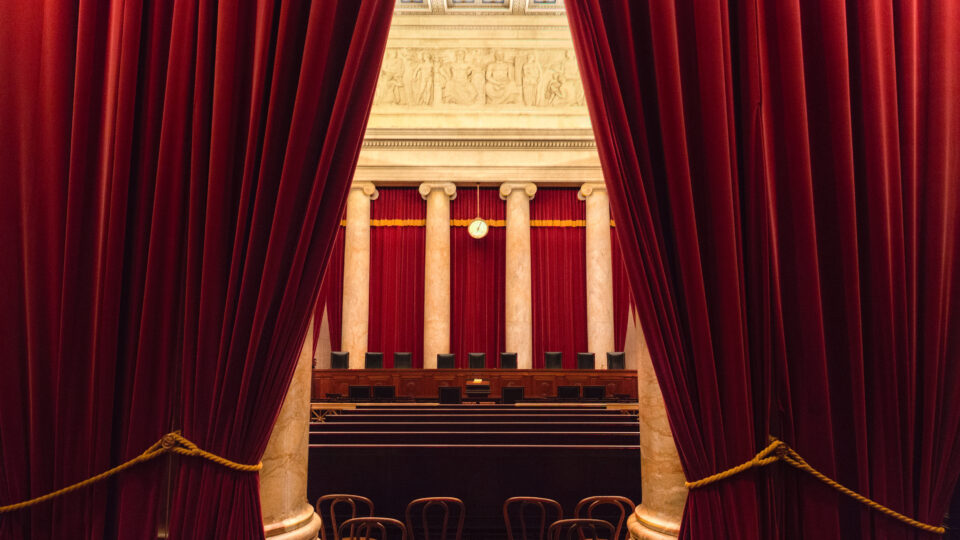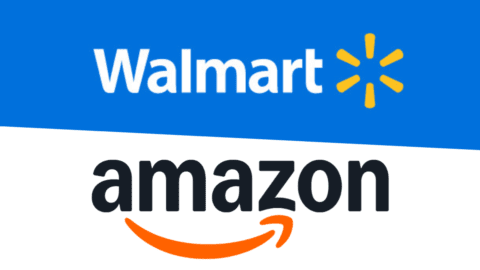Since President Trump first announced tariffs on Canada and Mexico on Feb. 1, followed by his sweeping “reciprocal tariffs” imposed on the rest of the world in April, retailers and consumers have been persistently buffeted by tariff headwinds.
If we’ve all gotten used to anything, it’s the unpredictability — tariffs can unexpectedly reach gale-force speeds or just as unexpectedly drop down to a level that feels navigable. Trump’s own whims, and negotiations with world leaders, have created much of the confusion, but the legal system has added to the turbulence as lawsuits against the tariffs work their way through judicial channels.
To Recap
In May the Court of International Trade (CIT) found that the tariffs were illegally imposed, but that decision was promptly stayed until it could be heard by an appeals court, which upheld the trade court’s ruling in August. Both courts determined that the International Emergency Economic Powers Act (IEEPA), which Trump invoked to impose his tariffs in April, does not allow a president to impose worldwide tariffs with no expiration date, as Trump has done. This appeals court ruling came three months after a federal judge in a separate case (Learning Resources v. Trump) ruled that the tariffs the president imposed related to fentanyl and to the International Emergency Powers Act are also illegal.
In the case of both rulings, tariffs have remained in effect while the world awaits an appeal in the Supreme Court, which is set to take place next Wednesday, Nov. 5. To expedite the process, the court has agreed to consolidate the two rulings into one hearing and agreed to hear the appeal on a faster-than-normal timeline.
Supreme Court May Have the Last Word on Trump Tariffs — or Not
And so now here we are, less than a week out from this pivotal hearing that will impact companies not just in America but around the world. Emotions and opinions are running high.
“We are confident that the Supreme Court, like the CIT and the Federal Circuit, will recognize that the President does not have unilateral tariff power under IEEPA,” said Jeffrey Schwab, Senior Counsel and Director of Litigation at the Liberty Justice Center, which represented the group of five small businesses that were plaintiffs in V.O.S. v. Trump, in comments to CNBC. “Congress, not the President alone, has the constitutional power to impose tariffs.”
Trump has his own arguments, of course, and isn’t afraid to share them in his typical fire-and-brimstone style: On Truth Social he predicted a “Great Depression” if the tariffs weren’t upheld and he told White House reporters that “we could end up being a third-world country” if tariffs are removed. And while advocating for an expedited hearing with the Supreme Court, Trump warned that the Treasury Department could be forced to refund between $750 billion and $1 trillion in collected tariffs if the Court waited until next June to issue a decision.
“I will tell you that’s one of the most important cases in the history of our country because if we don’t win that case, we will be a weakened, troubled, financial mess for many, many years to come,” Trump said at the White House on Oct. 15. He has even suggested that he might attend the hearing himself, something that appears to be unprecedented.
Whether or not the court agrees with Trump’s assessment of the potential fallout, there’s no doubt that its ruling will have wide-reaching implications. Beyond the global fiscal impacts of the tariffs themselves, the Supreme Court also faces the “hard question” of whether to disrupt a sitting president’s signature economic policy after it has already reshaped the global trade landscape, as former Solicitor General Elizabeth Prelogar pointed out at a recent event.
The Potential Outcomes, and How Retailers can Prepare

To try to get a handle on the situation and peek around the curve, Retail TouchPoints sat down with cross-border shipping expert Rathna Sharad, who is the CEO and Founder of logistics platform FlavorCloud and has a background that spans Microsoft, UPS, and three decades of global trade experience.
Retail TouchPoints: What are the different ways things could go with the Supreme Court on Nov. 5?
Rathna Sharad: If the court [finds this to be legal], then obviously, we continue to have these emergency tariffs. If the tariffs are deemed as not [a legal use] of this emergency power, then the tariffs can no longer be applied. But even in that case the Trump administration can request a stay, and they have other ways of instituting these tariffs that are not a use of emergency powers.
For example, there are other tariffs that Trump could impose on specific categories of goods; that is one way he could get around it. We’ve already seen tariffs on steel and aluminum, so you could then see things like apparel tariffs. This would be through the tariff authority granted under Section 232 [of the Trade Expansion Act of 1962].
There’s also Section 122 [of the Trade Act of 1974, which allows the imposition of tariffs to address “international payment problems”], and they can enact tariffs specifically against China under Section 301 of the Trade Act.
We obviously don’t know what the Supreme Court’s decision is going to be, but we already know that the Trump administration is going to be looking at alternate mechanisms [to impose these tariffs].
RTP: So there’s no indication that he would just say, ‘Okay, let’s drop the whole thing’ if the Supreme Court rules against him?
Sharad: No. The entirety of his administration has been about using tariffs to have a policy with every country, and to fine-tune it for every country.
The other thing to note here is that tariffs have been collecting [since the spring], and it’s really hard to undo that. How do you give that money back, and who would be responsible for that?
RTP: Supreme Court decisions take time after the hearing. Is there any chance of a ruling that will come in time to have an impact on the holiday season?
Sharad: I don’t think the Supreme Court ruling is likely to impact anything for the holidays. However, we’ve been dealing with this pretty much all year, and that’s not going to change any time soon. We’ve seen this massive flux of back-and-forth with the tariffs that has somewhat stabilized since August, but now we’re starting to hear that tariffs may be back on with China [although another truce appears to have been reached], that Mexico could see another 10% and that the situation is escalating with Canada. Those changes could have an impact over the holidays.
These things have a real implication for consumers, because brands have to consider price increases to mitigate some of this. You have to offset it somehow, and it has to either come from your bottom line or be passed on to the end consumer.
RTP: Is there anything retailers can do to protect themselves from the volatility of all this?
Sharad: One of the things that we have seen have a very significant impact in increasing conversions and allowing for margins is to have an accurate pricing strategy. For that they need technology. It’s one of the things that we do at [FlavorCloud] and it’s called localized market pricing. What that allows you to do is, at the product or SKU level, really understand the implications of tariffs and the overall cost, because the elimination of de minimis has had a real impact on that as well.
If they want to pass those costs on, they need to think about calculating a price for each market. So for example, if it is a $100 product in the U.S. and you are selling it to Canada, perhaps you want to include the 25% impact of tariffs in there, so you price it at $125 or $130 Canadian. For the consumer, that means they also don’t have to worry about what the tariff is today. And it’s programmatically adjusted, so when the tariff shifts to 35% you’re protected, and when the tariff shifts to less, maybe 15%, you’re still protected and the consumer gets the benefit of it.
Another option is to choose the Delivery Duties Paid (DDP) model. What that means is you’re taking advantage of technology that is able to calculate the duties, taxes, fees, tariffs, and provide that up front so the consumer knows and pays for it. It’s a slightly different strategy than having market-specific pricing and it may be easier to implement for some. It allows you to ensure that the consumer is not going to get a surprise after the fact and there are no issues at the border as a result.
Because one of the things that’s happened is, you’re having to provide additional data for customs clearance and stuff can get caught in customs if it doesn’t have sufficient information. Country of origin, the value of the goods, the description of the goods, the harmonized commodity code — these are all mandatory pieces of information required by customs. When parcels come in without it, they’re actually rejecting them and sending them back, which is very expensive, or they sit in customs waiting for this information. Every day it sits out there, it’s going to incur more charges, storage fees and additional clearance fees.
RTP: Do you have any tips for communicating all this with customers?
Sharad: For consumers it’s the flip side of what we talked about [for retailers]. It’s better to understand if all the duties, taxes and fees are included in the product price, whether it is separately shown to them or included. Consumers need to make sure when they’re purchasing that they’re not going to see additional bills after the fact.
RTP: I was just reading about some consumers getting bills from shipping carriers like FedEx for duty charges.
Sharad: That’s exactly what happens. Delivery Duties Paid means that the merchant is using technology like ours to accurately calculate all of these costs for the different items in the shopping cart. Either they’re using pricing strategies to create a product price that is inclusive, or they’re displaying it separately and saying, “Here’s the price and here are the duties and tariffs.”
If you didn’t see that happen, you just see $100 for the product and they didn’t say it was inclusive of everything, then the carrier — it could be UPS, it could be anybody that’s delivering — at the border, they’re going to run into problems. Customs could then reject the shipment because there’s not enough information. That means you may not get your parcel, or the fees keep increasing, and then you get a big fat bill of an additional $50 that you didn’t expect. [The carrier] is going to ask you to pay that bill before they will deliver. And if you say, “Well, they didn’t tell me, I don’t want it,” then you don’t get the parcel.
It’s a really terrible situation for the retailer too, because now they have a real margin issue. It could be, for example, $100 to return this product back to the merchant, which may not be worth it [based on] their wholesale cost, so they may have to just destroy that item. It’s not good for anybody.















